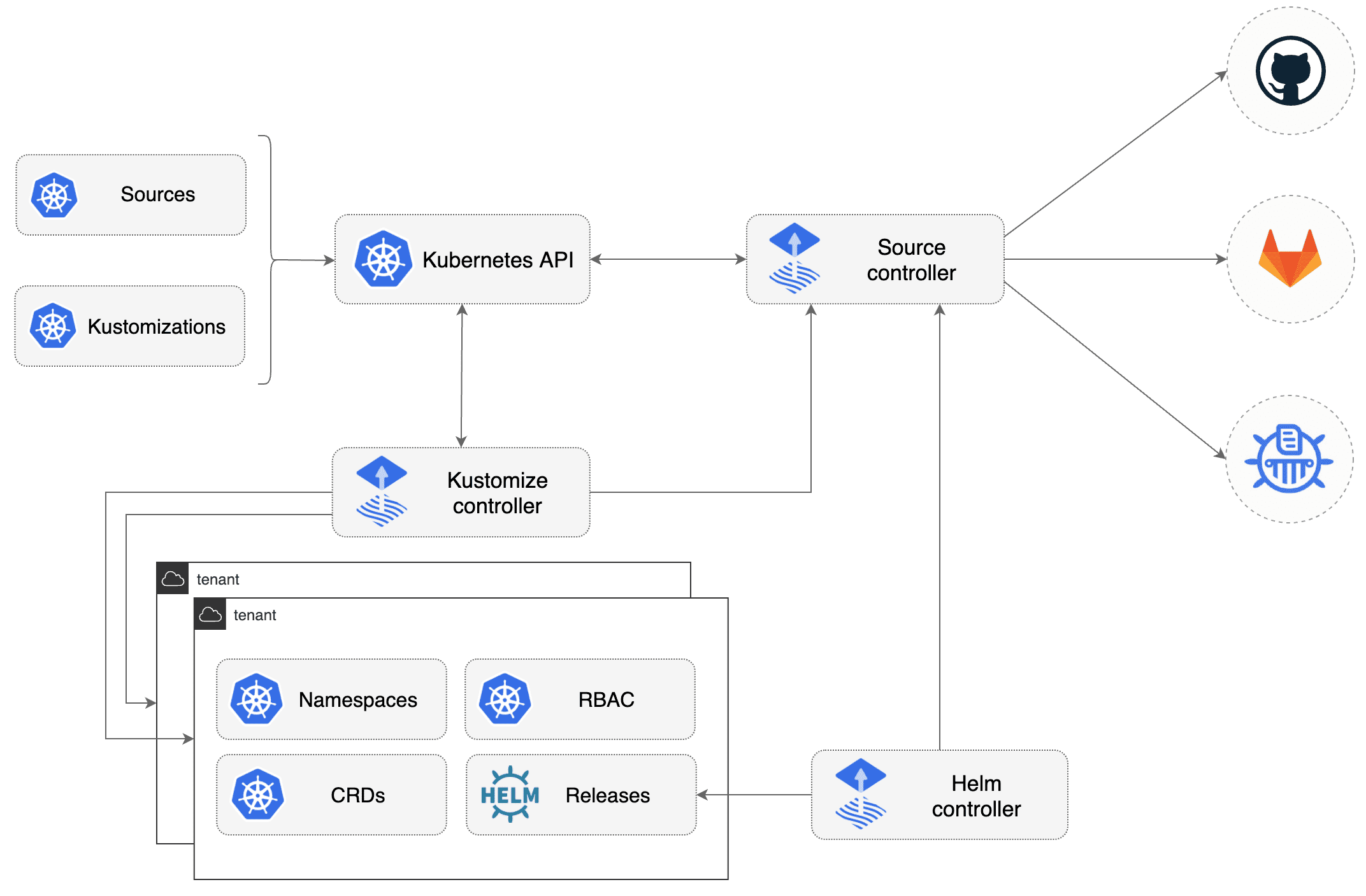核心概念
Core Concepts of Flux and the GitOps Toolkit.
Flux is a tool for keeping Kubernetes clusters in sync with sources of configuration (like Git repositories), and automating updates to configuration when there is new code to deploy.
Flux version 2 (“Flux v2”) is built from the ground up to use Kubernetes' API extension system, and to integrate with Prometheus and other core components of the Kubernetes ecosystem. In version 2, Flux supports multi-tenancy and support for syncing an arbitrary number of Git repositories, among other long-requested features.
Flux v2 is constructed with the GitOps Toolkit, a set of composable APIs and specialized tools for building Continuous Delivery on top of Kubernetes.
Flux helps
The GitOps Toolkit is for platform engineers who want to make their own continuous delivery system, and have requirements not covered by Flux.
Flux is based on a set of Kubernetes API extensions (“custom
resources”), which control how git repositories and other sources of
configuration are applied into the cluster (“synced”).
For example, you create a GitRepository object to mirror
configuration from a Git repository, then a Kustomization object to
sync that configuration.
Flux works with Kubernetes' role-based access control (RBAC), so you can lock down what any particular sync can change. It can send notifications to Slack and other like systems when configuration is synced and ready, and receive webhooks to tell it when to sync.
The flux command-line tool is a convenient way to bootstrap the
system in a cluster, and to access the custom resources that make up
the API.

flux CLI and running a couple of very simple commands,
you will have a GitOps workflow setup which involves a staging and a production cluster.
If you should need help, please refer to our Support page.
学习路径:
Need help or want to contribute? Please see the links below. The Flux project is always looking for new contributors and there are a multitude of ways to get involved.
Check out our events calendar, both with upcoming talks you can attend or past events videos you can watch.
We look forward to seeing you with us!
Core Concepts of Flux and the GitOps Toolkit.
Get Started with Flux and the GitOps Toolkit.
Flux install, bootstrap, upgrade and uninstall documentation.
Flux and the GitOps Toolkit user guides.
The GitOps Toolkit documentation.
The GitOps Toolkit development documentation.
The Flux Command-Line Interface documentation.
Flux and the GitOps Toolkit roadmap.
Flux and the GitOps Toolkit frequently asked questions.